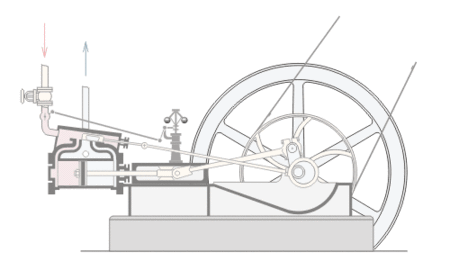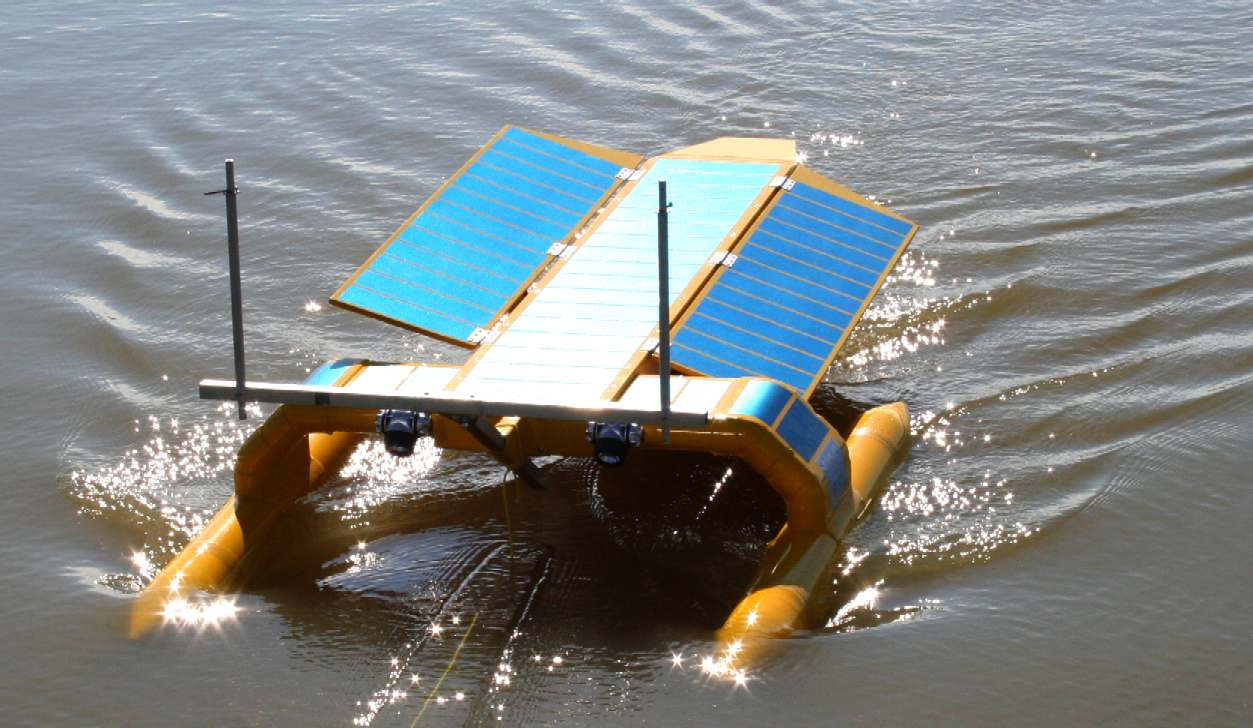
SEAVAX
- in open water trials, with no plastic to scoop, but she floated just
right, according to calculations. It is important when designing
specialist vehicles, to get the basics right. This solar powered concept
is still being refined with the work on the Elizabeth Swann proof of
concept model.
Our
'Plastics Hall' is an exhibition of ocean plastic waste, set against a
background of sky and sea painted walls, featuring ocean wildlife and
real single use plastic containers, bottles and lids, as a display of the
quantities of items that flood our supermarkets, so taint our everyday
lives, and contaminate our bodies; and those of almost all life
on earth.
Because we cannot seem to divest ourselves of our convenience culture.
Plastic accumulating in our oceans and on our beaches has become a global crisis. Billions of pounds of plastic can be found in swirling convergences that make up about 40 percent of the world's ocean surfaces. At current rates plastic is expected to outweigh all the fish in the sea by 2050.
Plastics pollution has a direct and deadly effect on wildlife. Thousands of
seabirds and
sea
turtles, seals and other marine mammals are killed each year after ingesting plastic or getting entangled in it. Endangered wildlife like Hawaiian monk seals and
Pacific loggerhead sea turtles are among nearly 700 species that eat and get caught in plastic litter.
We're surrounded by plastic. It’s in the single-use packaging we discard, the consumer goods that fill our stores, and in our clothing, which sheds microplastic fibers in the wash.
In the first decade of this century, we made more plastic than all the plastic in history up to the year 2000. And every year, billions of pounds of more plastic end up in the world's oceans. Studies estimate there are now 15–51 trillion pieces of plastic in the world's oceans — from the equator to the poles, from
Arctic ice sheets to the sea floor. Not one square mile of surface ocean anywhere on earth is free of plastic pollution.
The problem is growing into a crisis. The fossil fuels industry plans to increase plastic production by 40 percent over the next decade. These oil giants are rapidly building petrochemical plants across the
United States to turn fracked gas into plastic. This means more toxic air pollution and plastic in our oceans.
Marine scientists all over the world agree that we need urgent action to address the global plastic pollution epidemic.
But the United Nations is hampered by the same malaise Bluebird Marine
Systems encountered from 2015 until 2020. The oil companies and their
investors/shareholders appear more interested in profits and dividends,
than saving the planet. They
are the root cause of the problem, with no plan to prevent the pollution
they know they are causing. For without them, there would be no plastic
to worry about.
While oil companies play a significant role in the production of plastics, the responsibility for managing plastic waste is shared by various stakeholders, including consumers, governments, and recycling industries.
Oil companies are primarily driven by profit. The production of plastics is a lucrative business, and they may be reluctant to invest in waste management solutions that could reduce their profits.
As it seems from the evidence in our ocean, oil companies are not
held directly liable for the environmental consequences of plastic waste
- with a political get out of jail free card. This can create a disincentive for them to take proactive measures to address the issue.
At present they escape liability arguing that the global plastic supply chain is complex, involving numerous companies and countries. This makes it difficult to pin down those
responsible for waste management and illegal dumping in rivers. Coupled with governments turning a blind eye, not wanting to upset their
economies. Meaning, we cannot expect any change soon.
Our
exhibition of plastics in the marine environment aims to inform visitors
of the problem, in the hope that one day politicians of the world might
make conservation a voting manifesto priority.
ABS - BIOMAGNIFICATION -
CANCER - CARRIER
BAGS -COTTON
BUDS - DDT - FISHING
NETS
HEAVY
METALS - MARINE
LITTER - MICROBEADS - MICRO
PLASTICS - NYLON - OCEAN
GYRES - OCEAN
WASTE
PACKAGING - PCBS - PET - PLASTIC - PLASTICS - POLYCARBONATE - POLYSTYRENE - POLYPROPYLENE - POLYTHENE - POPS
PVC - SHOES - SINGLE
USE - SOUP - STRAWS - WATER
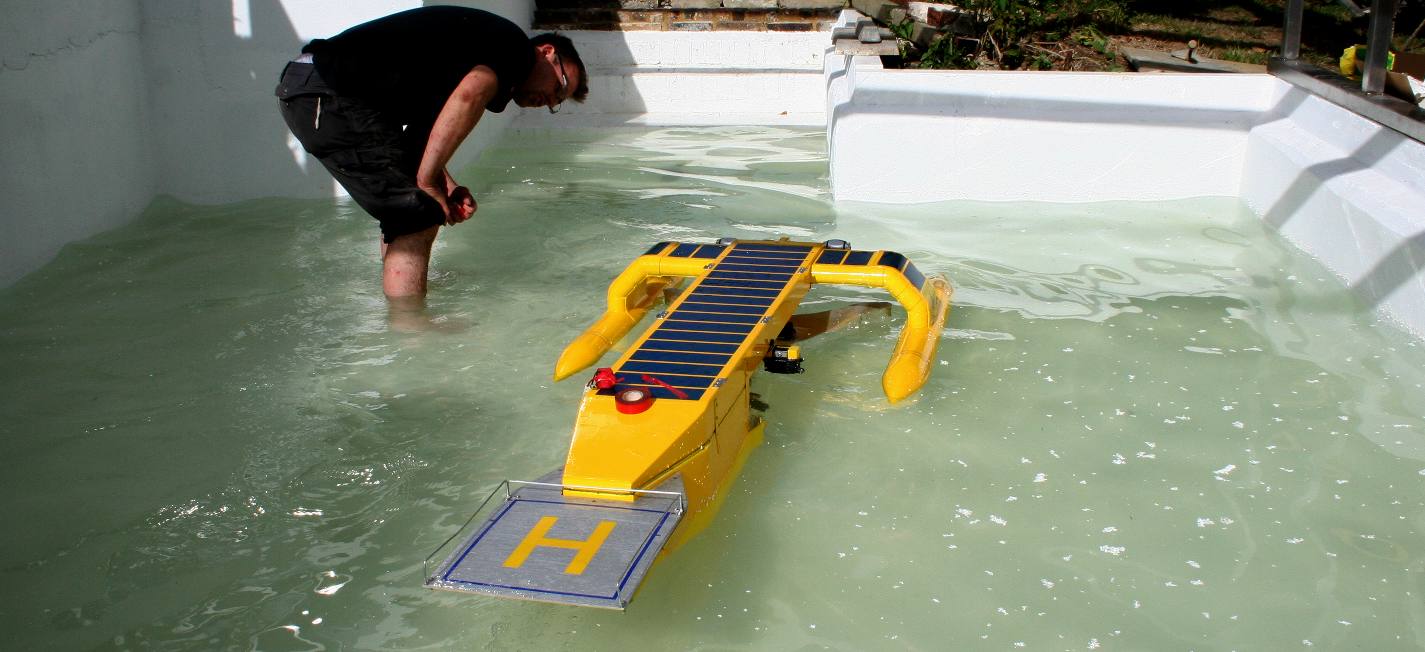
TANK
TESTING - This water basin was especially constructed to one side of the
Generating Works. The tank was filled with well water and plastic debris
scattered to simulate ocean waste, then the pumps and filters were
switched on. In the space of a few minutes, the tank was clear of
flotsam. Proving the Concept worked!
Why is ocean plastic waste increasing without any action to curb production, and could the ocean cleaning machines known as SeaVax have been of help in tackling the rise of
marine
litter, that is expected to outweigh fish in the sea by 2050?
The ever-increasing amount of plastic waste in our oceans is a pressing global environmental issue. Several factors contribute to this crisis:
1. Overproduction and Consumption of Plastic: The global production and consumption of plastic have skyrocketed in recent decades, leading to a significant increase in plastic waste.
2. Inadequate Waste Management: Many countries lack effective waste management systems, resulting in plastic waste ending up in landfills or, ultimately, in
rivers and
bays,
gulfs, oceans seas.
3. Lack of Recycling Infrastructure: Recycling rates for plastic are still relatively low, and the infrastructure needed to recycle plastic effectively is lacking in many parts of the world.
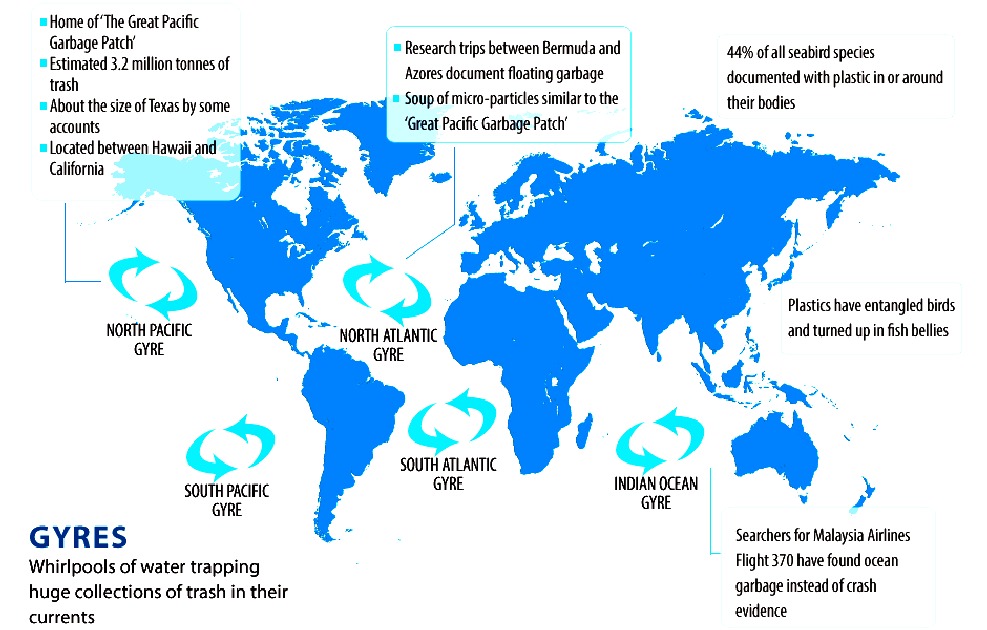
The Potential of SeaVax Machines
SeaVax machines, designed to collect plastic waste from the ocean's surface, could potentially play a role in addressing the marine litter problem. These machines can help to remove plastic debris from the
water, preventing it from harming marine life and ecosystems.
However, it's important to note that SeaVax machines are not a silver bullet solution. They have limitations, such as their inability to collect plastic that has sunk to the ocean floor. Additionally, the scale of the ocean plastic problem is so vast that relying solely on machines to clean up the waste would be impractical.
Indeed, may even persuade plastic producers that they might continue as
they are, because of the ocean dustcarts that could hoover up marine
litter, without harming flora and fauna.
Addressing the Root Causes
To effectively tackle the ocean plastic crisis, it is essential to address the root causes of the problem. This includes:
- Reducing plastic production and consumption: Promoting the use of reusable and biodegradable alternatives to single-use plastics.
- Improving waste management: Investing in better waste management systems and infrastructure to reduce the amount of plastic that ends up in the environment.
- Increasing recycling rates: Expanding recycling facilities and promoting recycling programs.
- International cooperation: Developing international agreements and partnerships to address the global nature of the ocean plastic problem.
While SeaVax machines could have contributed significantly to the cleanup efforts, a comprehensive approach that addresses the underlying causes of the problem is necessary to achieve a sustainable solution.
In any event, as the 'Dream Team' proved during multiple applications
for funding, and five years of lobbying the G7 nations, including the
European Commission, nobody wants to pay to the full price of cleaning up their mess all the
while the ocean is a free dumping ground.
The
UN's Circular Economy has no chance at all.
At present it is just a pipe dream
floated as an ideal, in a world of economic slush. Actions speak louder
than words - and there is no action. Despite Sustainability
Development Goal SDG14:
focusing on marine life below the waves.
The
real problem is generating sufficient political will, to want to tackle
the carcinogenic
threat to ocean ecology and human society, lurking beneath the waves. As
the top of the food chain, biomagnification
is sure to impinge on human health. At which point, like cigarettes,
seafood might have to carry a government health warning. Even today,
some shellfish cannot be harvested or eaten, it is so polluted with micro
plastics and glass
fibres.
In
2024, plastic is still a growing menace, according to several reports, including
those of the United
Nations, claiming
that waste disposal, as dumping from rivers into the ocean will
double in the near future.
There will be more plastic in the sea than fish
by 2050. It's an extraordinary
situation, with few actors looking to invest in cleaning up the existing mess, or
even swapping polyolefin's for biodegradable substitutes. Thus, threatening
safe seafood supplies.
The
SeaVax
was thus a noble effort on the part of the Cleaner Ocean Foundation and
their volunteers - a cherished exhibit, sometimes loaned out for events and talks,
always returned to a dedicated ocean plastic exhibition at Herstmonceux
Museum, as part of the science technology
trail, innovation hub.
|
CHEMICAL
COMPANY A - Z
|
EMPLOYEES
|
$
BILLIONS
|
|
-
|
-
|
-
|
|
ALPLA:
|
17,300
|
3.3
|
|
Аrkema
SA:
|
20,000
|
8.8
|
|
BASF:*
|
39,000
|
63.7
|
|
Berry
Global:*
|
-
|
-
|
|
Borealis
AG:
|
-
|
-
|
|
Borouge (Abu
Dhabi Polymers Co Ltd):
|
6,500
|
7.2
|
|
Braskem
SA:*
|
-
|
-
|
|
ChevronPhillips Chemical:
|
5,000
|
13.4
|
|
Clariant:*
|
-
|
-
|
|
CNPC:(
China National Petroleum Corp):
|
1,470,190
|
326.0
|
|
Covestro:*
|
-
|
-
|
|
CP
Group:*
|
-
|
-
|
|
Dow
Chemicals:*
|
14,000
|
49.0
|
|
DSM:
|
-
|
-
|
|
DuPont:
|
-
|
-
|
|
ENI
S.p.A. Ente
Nazionale Idrocarburi (Versalis):*
|
33,000
|
61.6
|
|
Exxon
Mobil:*
|
75,600
|
290.0
|
|
Formosa
Plastics Corporation:*
|
2,800
|
5.0
|
|
Henkel:*
|
-
|
-
|
|
INEOS (Ineos
Group AG):
|
19,000
|
60.0
|
|
Lanxess:
|
16,700
|
7.9
|
|
LG
Chem:
|
14,000
|
17.8
|
|
Lyondell
Bassell:*
|
13,000
|
33.0
|
|
Mitsubishi
Chemical Holdings:*
|
-
|
-
|
|
Mitsui
Chemicals:*
|
-
|
-
|
|
NOVA
Chemicals:*
|
-
|
-
|
|
OxyChem:*
|
-
|
-
|
|
Polyone
Corp:*
|
-
|
-
|
|
Procter
& Gamble:*
|
-
|
-
|
|
Reliance
Industries Ltd:*
|
-
|
-
|
|
Repsol
SA:
|
-
|
-
|
|
Sasol
Ltd:*
|
-
|
-
|
|
SABIC:
(Saudi Arabia Basic Industries Corp)*
|
40,000
|
35.4
|
|
SCG
Chemicals:*
|
-
|
-
|
|
Shell:*
|
-
|
-
|
|
Sinopec:
|
249,000
|
314.4
|
|
Suez:*
|
-
|
-
|
|
Sumitomo
Chemical:*
|
-
|
-
|
|
Tosoh
Corp:
|
-
|
-
|
|
Total
SA:*
|
-
|
-
|
|
Veolia:*
|
-
|
-
|
* Denotes
membership of the AEPW
It's easy to dismiss plastics as cheap and nasty materials that wreck the planet, but if you look around you, the reality is that we depend on it. If you want cars, toys, replacement body parts, medical adhesives, paints,
computers, water pipes, fiber-optic cables, and a million other things, you'll need plastics as well.
If you think we struggle to live with plastics, try imagining for a moment how we'd live without them. Look around your home, office and car. Plastic is fantastic. We just need to be smarter and more sensible about how we make it, use it, and recycle it when we're done with it.
We need legislation to make it a criminal offence, with enforceable
fines, for not recycling plastics.
The
same should apply to nations that dump plastic in the oceans via their
river systems. Fines should be levied against the polluting nations, at
international level.
OUR
HEROES - Julia Roberts plays Erin Brockovich. Erin Brockovich is an American paralegal, consumer advocate, and environmental activist who was instrumental in building a case against Pacific Gas & Electric Company (PG&E) involving groundwater contamination in Hinkley, California for attorney Ed Masry in 1993. Their successful lawsuit was the subject of the Oscar-winning film, Erin Brockovich (2000), starring Julia Roberts as Brockovich and Albert Finney as
Masry. Imagine bringing a class action against the plastic producing oil
companies, all of which know their products are killing us. Making
humans impotent and more liable to cancer. We know that killer whales
are becoming impotent as a result of man made ocean pollution, but they
cannot do anything about it.
Most plastics are synthetic, they'd never spontaneously appear in the natural world and they're still a relatively new technology, so animals and other organisms haven't really had chance to evolve so they can feed on them or break them down.
Since a lot of the plastic items we use are meant to be low-cost and disposable, we create an awful lot of plastic trash. Put these two things together and you get problems like the
Great Pacific Garbage
Patch, a giant "lake" of floating plastic in the middle of the North
Pacific Ocean made from things like waste plastic bottles.
How can we solve horrible problems like this? One solution is better public education. If people are aware of the problem, they might think twice about littering the environment or maybe they'll choose to buy things that use less plastic packaging.
Another solution is to recycle more plastic, but that also involves better public education, and it presents practical problems too (the need to sort plastics so they can be recycled effectively without contamination). A third solution is to develop bioplastics and biodegradable plastics that can break down more quickly in the environment.
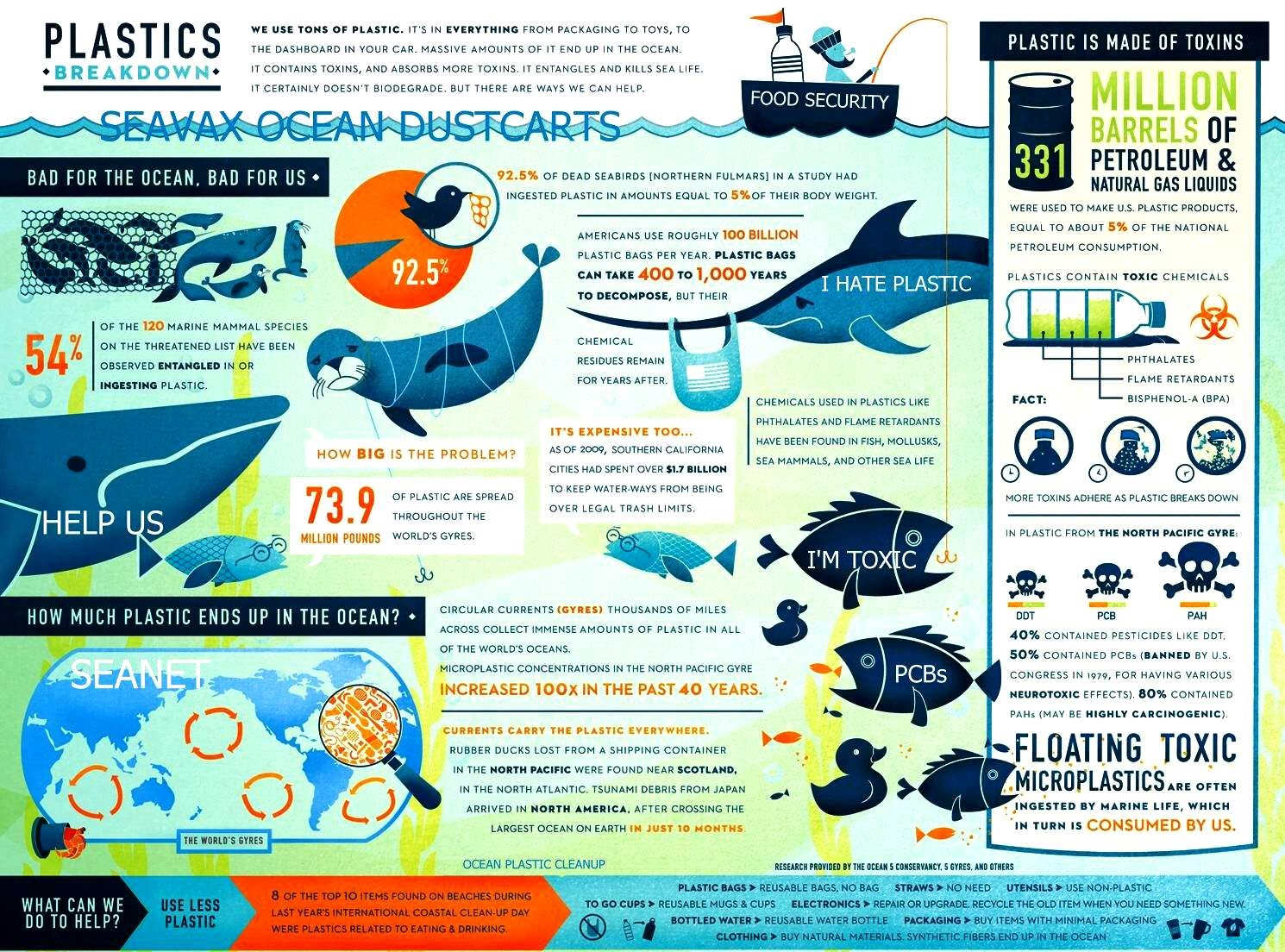
Each year, 400 million tonnes of plastic is produced and 40% of that is single-use - plastic we'll only use once before it's binned.
Experts think that by 2050, the amount of plastic in the ocean will weigh more than the amount of fish in the
ocean.
One in three sea turtles, and around 90% of seabirds, have eaten it.
They can't digest plastic so their stomachs can become full, meaning they don't have room for actual food.
Each year, 100,000 animals in the sea are killed by plastic. This is shocking stuff, enough to make everyone feel terrible for allowing it to happen - even where we did not know what we were doing.
In the UK they now pay 5p for plastic carrier bags and the number we use has dropped by over 80%. But how much of this tax goes to research on plastic recycling?
Not much if any. Show us where this money went please. More likely into
the Pensions and National Debt black holes. The tax was as ill conceived as our ignorance at creating a robust material without realising that the biological world has no place for bio-un-degradeables.
Plastic pollution has passed the point where we can return to a planet undamaged by synthetic polymers. The only hope is that mankind can learn to respect plastic enough for each and every one of us to treat it with great care.
But also, and this is critical, that we use what we’ve learned about plastic pollution to urge the rapidly expanding plastics industry to redesign products and create a claw-back infrastructure that makes plastic products benign.
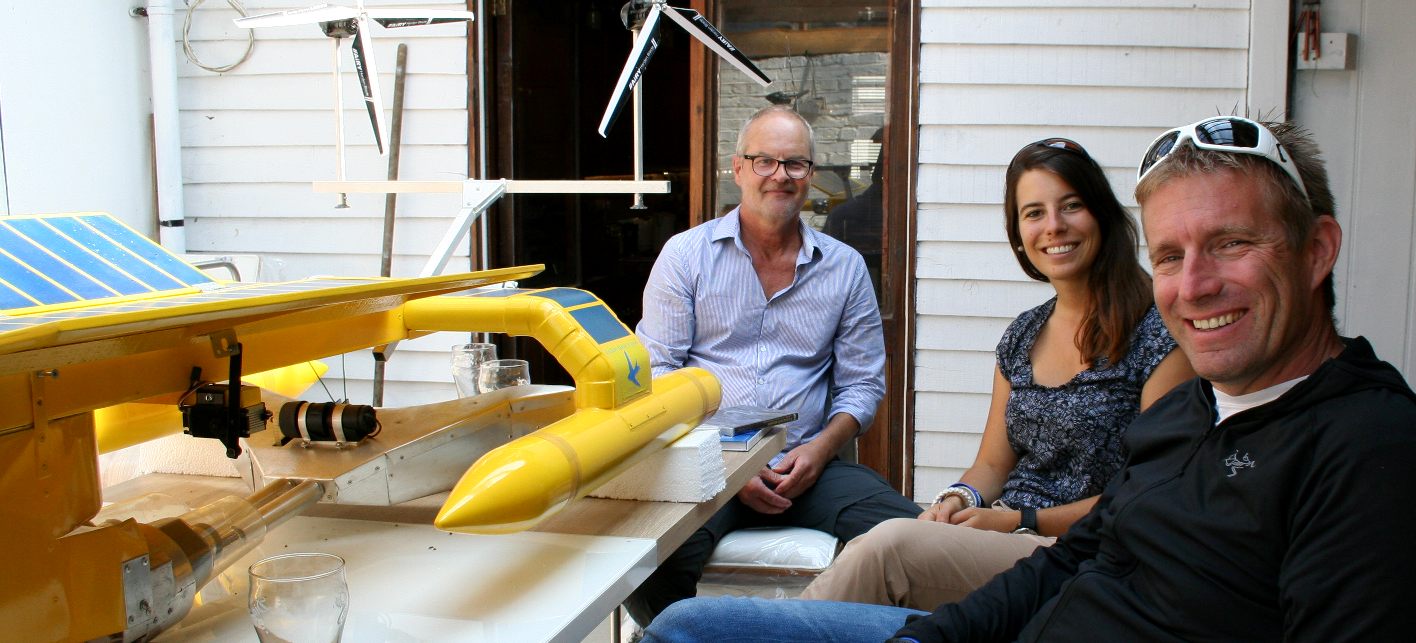
SOLAR PIONEERS - Stephane Chopard & Raphaelle Javet (communications) and Raphael Domjan (pilot) on a visit to
Herstmonceux Museum in August 2017. Raphael's Turanor PlanetSolar project set the benchmark when it comes to solar powered zero carbon transport.
Proving that other solar powered vessels like SeaVax may operate from
energy from nature.
Over the last century, humans have produced and used a lot of plastic, approximately 300 million tonnes of plastic is produced globally each year. Plastic is cheap, lightweight yet strong, and versatile, and there are many uses for it.
Single-use plastic is of particular concern as it often has little or no recycling value (technically most plastics are recyclable, but many aren’t economically viable to do so).
Therefore, when when plastic is disposed of, it eventually ends up in the ground, in the air and in our oceans. Around eight to 13 million tonnes of plastic enters our oceans every year, the majority of which (80%) originates from land, putting marine animals in danger and polluting beaches.
Unlike other more sustainable products and biodegradable materials, plastic tends to stick around for a long time. In fact, it can take hundreds of years for just one item to decompose – if at all. For example, the average plastic shopping bag takes around 20 years to break down, while it’s thought that the lifespan of a single plastic straw is 200 years. Even more alarmingly still, a single-use plastic bottle is said to take 450 years to decompose, and a disposable nappy takes 500 years.
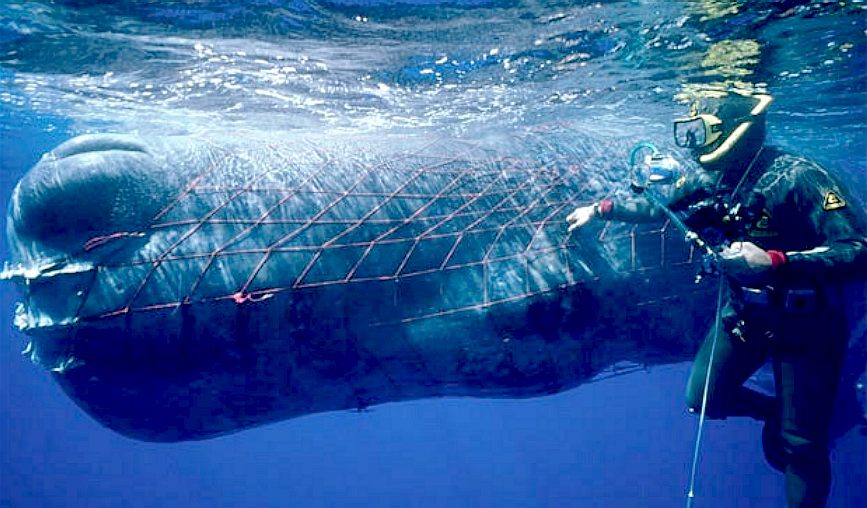
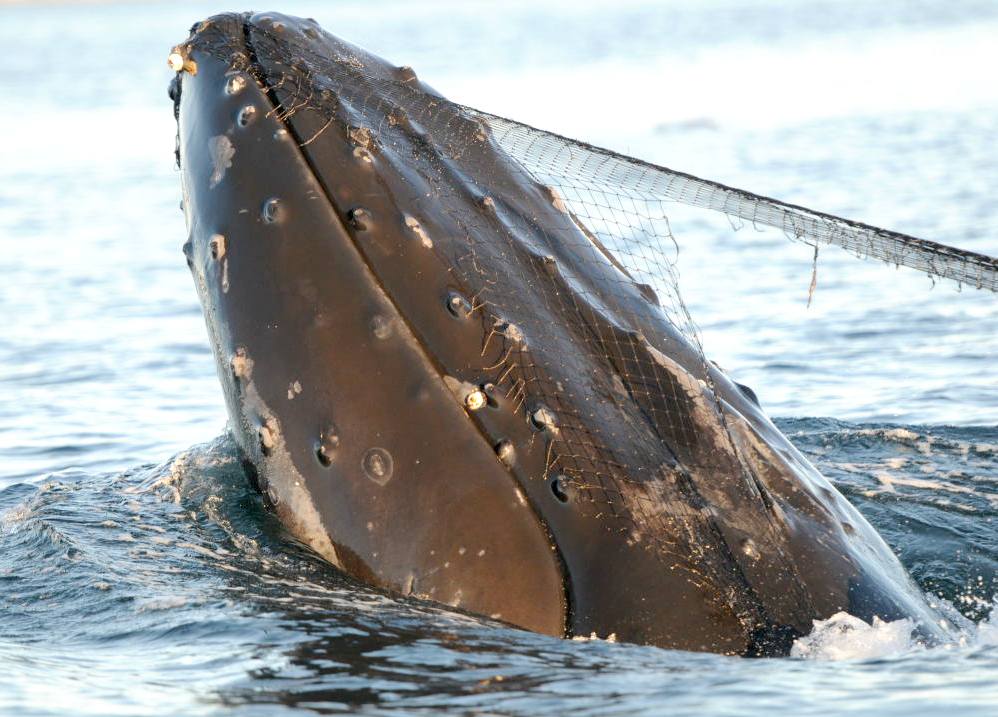
Even if plastic does begin to decompose, it can then break down into microplastics. Like the name suggests, microplastics are tiny plastic particles, and they are usually defined as being less than 5mm in diameter. There are two types of microplastics: primary and secondary. Primary microplastics are used in products, such as in cosmetics, while secondary microplastics are plastic particles that are the result of the breakdown of larger plastic objects. Microplastics are often visible on beaches as tiny multicoloured plastic bits in the sand, and they can end up in the ocean too, where they are often consumed by marine animals transferring them into food chains. Micro-plastics are also found in the air, the risks of which aren’t yet known.
But for sure humans are breathing them in.
What’s more, the majority of plastics contain toxins and chemicals that come from the production of fuels such as gas, oil and even
coal, meaning that this material also contributes to
global
warming. The more we rely on plastic, the longer we will demand these fuels, which in turn, will continue to have a hugely negative impact on our planet.
Covering 70% of the earth’s surface, our oceans produce over half of the world’s
oxygen, and they store 50 times more carbon dioxide than the atmosphere, playing a crucial role in the air you breathe every day. Our oceans help with climate regulation too, transporting heat from the equator to the poles which in turn, has an impact on weather patterns.
The planet’s oceans are also home to millions of diverse unique species of fish, mammals and other aquatic wildlife, from turtles and penguins, to sharks and whales, and everything else in between, all of which play an important role in the earth’s ecosystems. Sadly, there are many marine animals that are at risk of becoming endangered or extinct as a result of plastic pollution in our oceans.
Our oceans are essential for all life on earth, so it’s important that we make changes now to protect the planet.
It has been proposed that a
river version of SeaVax, known as
RiverVax, might be stationed outside or at the mouths of the 10 dirtiest rivers in the world, to significantly reduce dumping of plastic waste in the ocean. It was suggested that just 100 RiverVax machines, ten per offending river, could make a serious dent in plastic reaching the sea. And that would help other ocean cleanup projects to prevent new dumping reaching the seabed. Why then is the United Nations, G7 and G20 not doing anything similar?
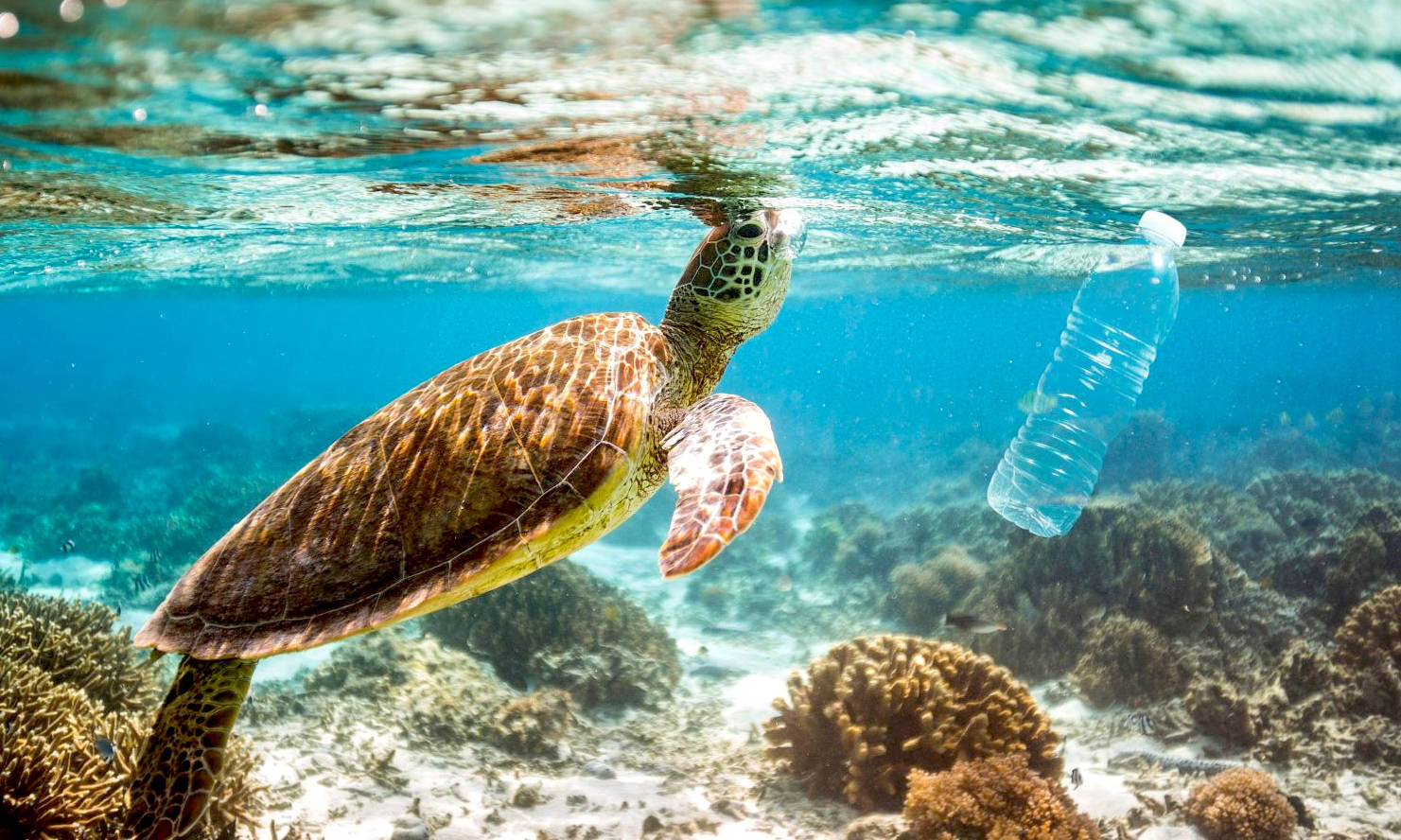
The Challenges of Deploying RiverVax Machines
The idea of using RiverVax machines to intercept plastic waste before it reaches the ocean is a promising one. However, there are several challenges and considerations to keep in mind:
Cost and Infrastructure: Deploying and maintaining 100 RiverVax machines in 10 of the world's dirtiest rivers would be a significant investment. The cost of purchasing, operating, and maintaining these machines would need to be carefully considered. Additionally, the necessary infrastructure, such as power sources and maintenance facilities, would need to be established.
Local Opposition: Introducing large-scale machinery into rivers could potentially face opposition from local communities or environmental groups concerned about the impact on ecosystems and
wildlife.
Effectiveness: While RiverVax machines could be effective in capturing floating plastic waste, they may not be able to intercept all of the plastic that enters rivers. Some plastic waste may sink or become entangled in debris, making it difficult to collect.
Root Causes: Addressing the root causes of plastic pollution, such as overproduction, inadequate waste management, and lack of recycling infrastructure, is essential for long-term solutions. Relying solely on technological solutions like RiverVax machines may not be sufficient.
Why the United Nations, G7, and G20 Haven't Implemented RiverVax Machines
The reasons why these international organizations haven't taken action to deploy RiverVax machines are likely complex and multifaceted. Some potential factors include:
Prioritization of Other Issues: These organizations may be focused on other pressing global issues, such as climate change, poverty, or conflict.
Resource Constraints: Implementing a project of this scale would require significant financial and logistical resources.
Political Challenges: Coordinating international efforts to address environmental issues can be complex and time-consuming.
Uncertainty about Effectiveness: There may be concerns about the long-term effectiveness of RiverVax machines and their potential impact on ecosystems.
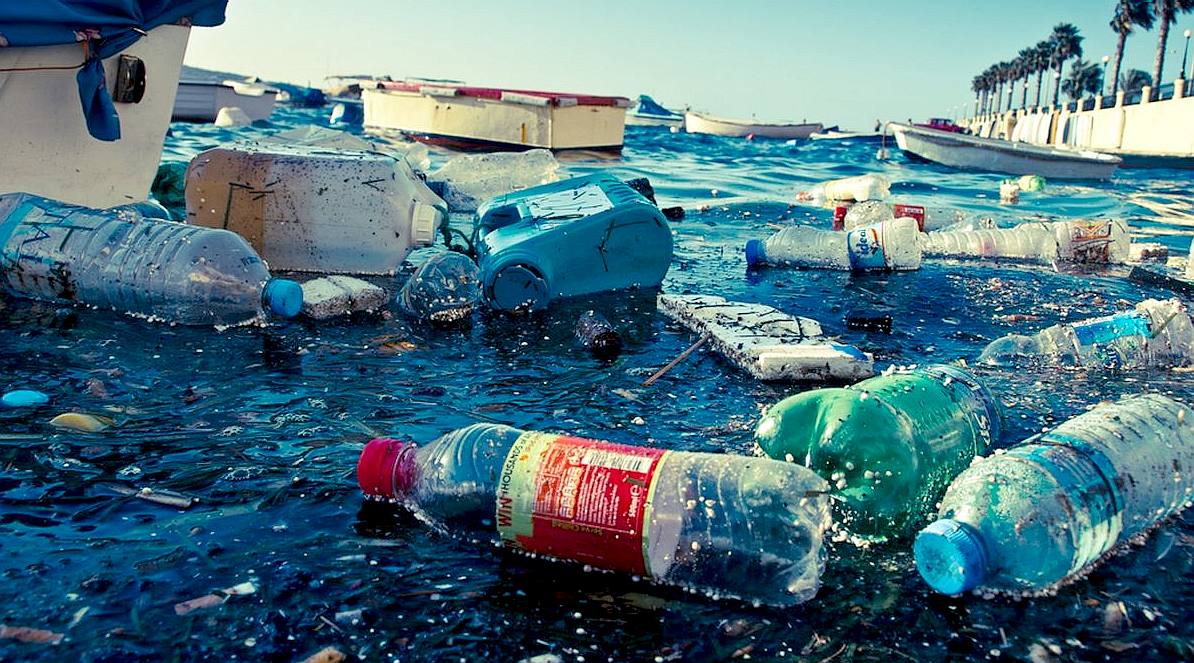
MOVING
FORWARD
While the idea of using RiverVax machines to reduce ocean plastic pollution is promising, a comprehensive and collaborative approach is needed to address the root causes of the problem. This could involve a combination of technological solutions, policy changes, and public awareness campaigns.
What appears less than responsible, is not even trying out systems like
RiverVax and
SeaVax,
or developing alternative solutions.
Surely, in not testing potential technology solutions, the UN and EU remain in the dark as to what their scientific options might be. A bit like an Ostrich putting it's head in the sand, not wanting to see the dangers and cures.
What reasons might there be for the G20 not wanting to know more?
REGRESSIVE ADMINISTRATIONS
The reluctance of international organizations like the UN,
G7, and G20 to invest in and test technologies like RiverVax and SeaVax could be attributed to several factors:
Uncertainty and Risk: Implementing new technologies, especially on a large scale, involves inherent risks and uncertainties. There may be concerns about the potential environmental impacts, technical challenges, and the long-term effectiveness of these solutions.
Resource Constraints: These organizations often have limited budgets and must prioritize their spending on various global issues. Investing in experimental technologies can be costly, and there may be concerns about the potential return on investment.
Political and Bureaucratic Hurdles: International cooperation can be complex, and obtaining consensus among member states on new initiatives can be challenging. Bureaucratic procedures and political considerations may hinder the adoption of new technologies.
The fact is that trials of SeaVax or RiverVax machines over a 12 month period in one sample river and one small area of ocean known to be seriously polluted would only cost around
$Twenty million dollars, whereas, the damage to the ocean economy is
$Billions of dollars every year. Would it not then make sense to at least evaluate the potential, give the low price of finding out
about what appears to be a cost effective solution, may be capable of?
The relatively low cost of trialing SeaVax or RiverVax machines compared to the billions of dollars in damages caused by ocean plastic pollution makes it a compelling case for experimentation.
SOME ADDITIONAL ARGUMENT IN FAVOR OF CONDUCTING EXPERIMENTS
Data Collection: Conducting trials would provide valuable data on the effectiveness of these machines in collecting plastic waste, their environmental impact, and their operational costs.
Public Support: Demonstrating a commitment to exploring innovative solutions could garner public support and encourage further investment in ocean cleanup efforts.
Risk Mitigation: By conducting trials on a smaller scale, it's possible to identify and address potential issues before deploying these machines on a larger scale.
Inspiration for Further Innovation: The results of the trials could inspire further research and development of more advanced technologies for ocean plastic cleanup.
Given the potential benefits and relatively low cost, it seems reasonable that international organizations should be more willing to invest in trials of SeaVax or RiverVax machines. It's a step in the right direction toward addressing the pressing issue of ocean plastic pollution.
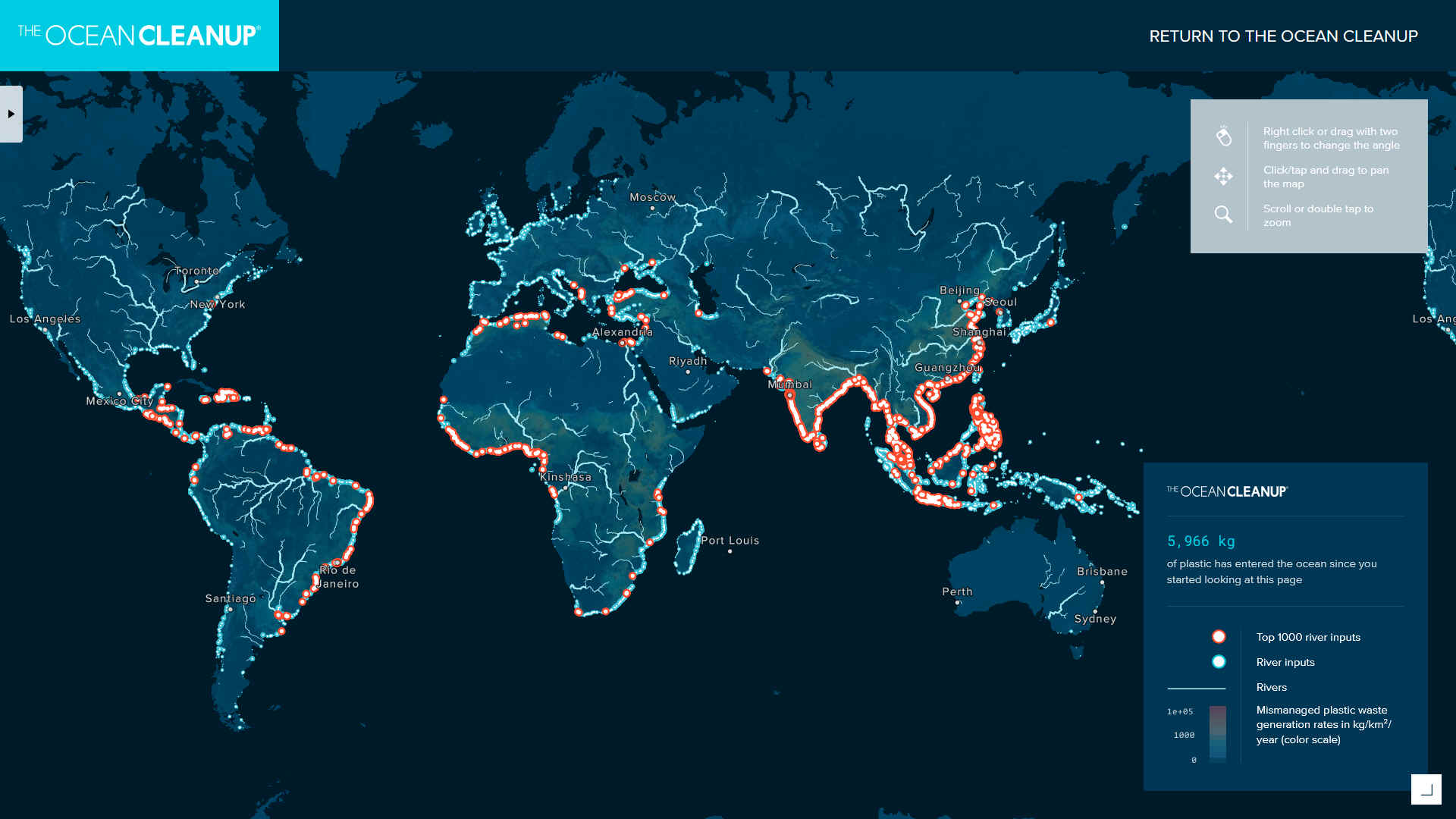
RIVER
HOT SPOTS - This Ocean Cleanup Project conducted a study of 1,000 rivers
to draw this map of the world. This is how plastic enters the oceans:
Atlantic, Indian and Pacific.
Only 9% gets recycled, and about 22% of plastic waste worldwide is either not collected, improperly disposed of, or ends up as litter.
People in high income countries consume the most plastic, but the waste management systems there are usually effective – meaning that even though there’s a lot of plastic around, it is mostly kept out of the natural environment. Meanwhile, lower income countries often consume less plastic, meaning emissions from these countries remain low even if the local waste management infrastructure is lacking.
Most plastic emissions come from middle-income countries, where plastic usage is growing, but a lack of adequate waste management systems presents challenges in dealing with the increase in consumption.
During storms and other heavy rain events, plastic emissions can increase as much as tenfold as trash is washed into waterways. Rivers are the arteries that carry plastic from land to sea — but not every piece of plastic in a river will end up in the ocean. Many objects sink to the riverbed or get stuck somewhere along the river system.
The closer the plastic is to a river, and the closer that river is to the ocean, the greater the chances that the plastic will reach the ocean.
Therefore, coastal cities in middle-income countries are the world’s plastic emissions hotspots. All these factors taken into account led to a study by The Ocean Cleanup group from 2021 identifying 1000 rivers worldwide representing almost 80% of ocean plastic emissions.
NOT
FOR PROFIT - NEGATIVE BUSINESS MODEL - OR LOSS MAKER
The
Cleaner Ocean Foundation worked out a business model, to attract
conventional finance from banks and governments. Crowdfunding took the
project forward quite a bit, but even so losses from operating overheads
were mounting. This, despite the fact staff were all volunteers. But
volunteers are in short supply when it involves giving up the day job
for 12 months or more, putting their lives on hold.
The
Foundation tried to balance ocean cleaning operations in sustainable terms, but came up against a brick wall, in that no business that continuously loses money could ever be considered
sustainable if unable to pay interest on loans. The Foundation found there were no philanthropist or corporations that cared enough
at that time to give from their profits in sufficient sums by way of donations, to come anywhere near to covering bank loans, staffing expenses, or just the operating cost of a not for profit, where offices, vehicles and accountants all cost money.
Did
the Foundation do the right thing in pulling the plug on SeaVax to curtail mounting losses, to be able to concentrate on Ocean Awareness campaigns. Or might there have been another way to prevent insolvency?
The decision to pull the plug on SeaVax was a difficult one, but it may have been the most prudent choice given the circumstances.
A bankrupt Foundation is of no lobbying value, if it ceases to exist.
While ocean cleanup is a noble cause, it's essential to be realistic about the financial challenges involved. If a not-for-profit organization is facing mounting losses and is unable to secure sufficient funding, it may be necessary to reassess its operations and consider alternative strategies.
Ultimately, the decision to continue or discontinue a venture depends on various factors, including the organization's mission, values, and financial sustainability.
As the organization was facing significant financial difficulties and was unable to secure the necessary funding, pulling the plug may have been the most responsible course of action.
While it's unfortunate that the venture was unable to continue along the SeaVax route, the focus on ocean awareness campaigns is thought to be a valuable contribution to addressing the problem of marine plastic pollution.
By raising awareness and advocating for policy changes, it may be possible to create a more sustainable environment for future ocean cleanup initiatives.
Indeed, switching to creative campaigns such as the $Billion Dollar Whale, (or Kulo-Luna), may end up raising awareness, if for example, the published script is made into a low budget feature film. Such eventual success may even help to rekindle development of ocean cleaning machines, or fund efforts in other worthwhile directions.
Even
so, the cost of mounting such initiatives has caused yet more lost
investment. Graphic artists and story developers and script writers all
cost money. Then there is the cost of trademarks, if film makers who
engage are to be insulated against investing their time for no reward.
Creative campaigns like "The $Billion Dollar Whale" can be powerful tools for raising awareness about important issues like ocean plastic pollution. By engaging audiences through storytelling and entertainment, these campaigns can inspire action and generate support for environmental initiatives.

Here's how these campaigns could benefit ocean cleanup efforts:
- Increased Public Awareness: By reaching a wider audience, these campaigns can educate people about the problem of ocean plastic pollution and its consequences.
- Mobilizing Support: The campaigns can inspire individuals and organizations to take action, such as donating to ocean cleanup initiatives, reducing their plastic consumption, or advocating for policy changes.
- Attracting Investment: A successful campaign can attract investors and philanthropists who are interested in supporting environmental causes.
- Inspiring Innovation: The creative content in these campaigns can spark new ideas and inspire innovative solutions to the problem of ocean plastic pollution.
If a low-budget feature film based on the script of one of these campaigns were to be produced, it could have a significant impact. A successful film can reach a wide audience and generate significant buzz, potentially leading to increased public support and investment in ocean cleanup efforts.
Ultimately, a combination of creative campaigns, technological innovation, and policy changes will be necessary to address the complex issue of ocean plastic pollution. By using storytelling and engagement to inspire action, these campaigns can play a crucial role in driving progress.
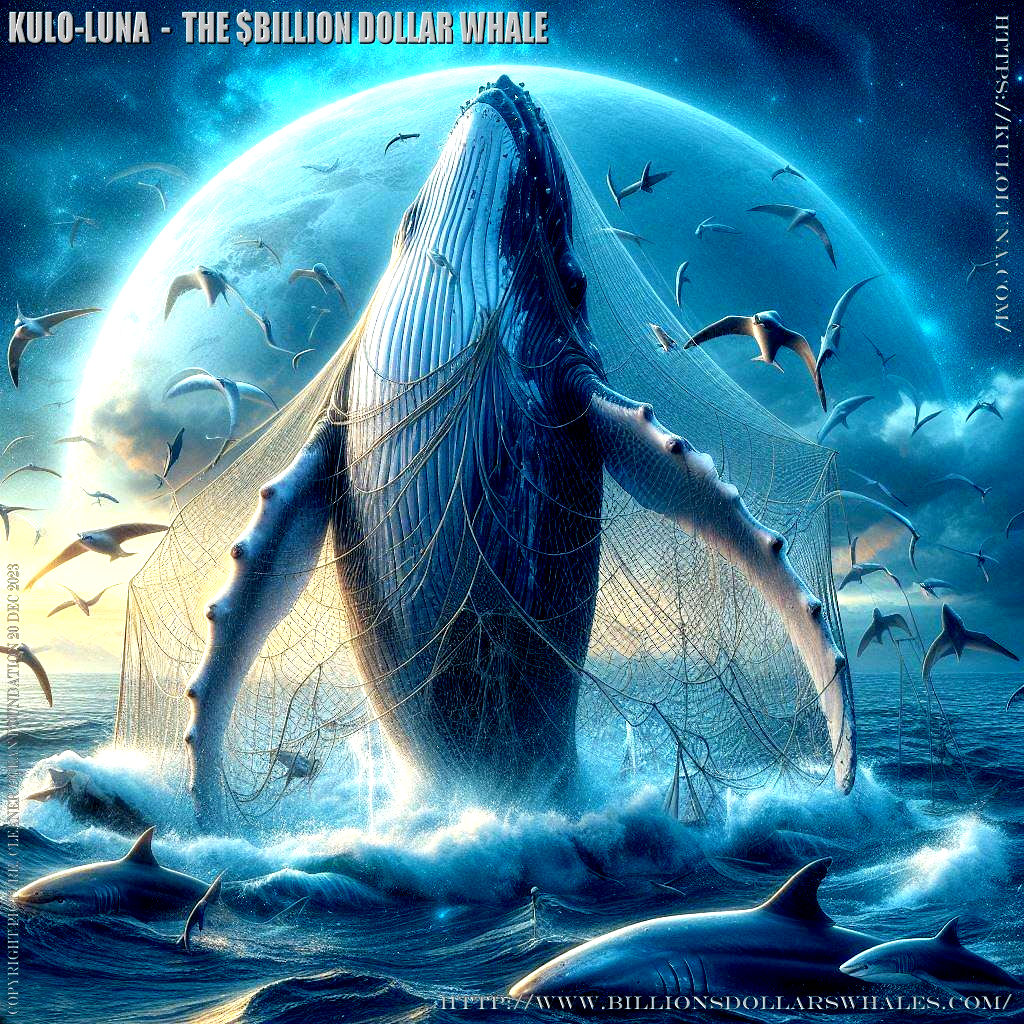
SACRIFICES
The
SeaVax dream team generously gave five years of their working lives, to show world
leaders that there are ways of combating the problem, and maybe
one day, we'll see artificially intelligent, energy autonomous machines like this, skimming the ocean
waves clean of detritus, and an outright ban on single use packaging.
With special thanks to Chris
Close, Lloyd
Stebbings and Richard
Whelan, who received no remuneration in return for their sterling
efforts.
Plastic
products that are recycled responsibly, are perfectly acceptable, do not
think otherwise. We are not plasti-phobic, just sensibly precautious. Our society depends on engineering and medical
plastics. In developing a truly Circular
Economy, we must then develop ways of dealing with our need to use
plastics, so as not to cause harm to any other form of life. We owe a
Duty of Care to the environment in this regard.
There are
several innovative vehicles and vessels on permanent display at
Herstmonceux Museum, including:
1.
Art
Gallery - Collection of paintings, pictures, graphics, sculptures,
wooden carvings & exotic glassware
2.
Archives - Historic documents library, patents, trademarks,
copyright, films, catalogued legal papers & letters
3. An
Edwardian ice well, throwback to the days before refrigeration
4.
A large underground (condensation/cooling) and water storage chamber for
ice making
5.
The
world's smallest water basin, test tank for model boats & ships to
1:20 scale
6.
World's smallest
wind tunnel, vehicle drag measuring instrument using electronic
strain-gauges
7.
Three
PV boat models,
Navigator, SWATH & 2 cats + route map prior to Swiss PlanetSolar
8.
Seavax, the ocean cleanup
proof of concept prototype from 2016 - Hall
of Plastic, ocean waste, marine litter Vs fish 2050
9.
AmphiMax, radio controlled (working) beach launching & recovery
vehicle for SeaVax
10.
Anthony the
most dangerous giant
Australian bulldog ant, 300 times normal size - Making
Ant's Cart
11.
EV - FCEV refueling station
model in 1:20 scale
12.
The only working
(fully functional) water well in Herstmonceux village
13.
The fountain of youth, Cleopatra inspired statue supplied from natural well water
drawn on site
14.
Second World War, 'Anderson Inspired,' bomb proof shelter constructed by Major Charles de Roemer
15.
City
sports FCEV-BEV, hydrogen gull wing proof of concept DC50 electric car
16.
Land speed record car: Bluebird-Electric BE1 (original 1st) with battery
cartridge exchange
17.
Land speed record car: Bluebird-Electric BE2 (original 2nd) with cartridge
exchange
18.
A complete mummified squirrel, found when re-roofing the Museum June
2017
19.
A fully operational, and restored VW Kombi van dating from 1978
(historic vehicle)
20.
BMW i3, battery electric vehicle hybrid, with onboard generator range
extender
21.
Solar panel,
and battery energy storage systems facing north-south and east-west
22.
A hornet's nest found on site & preserved in 2016 (reported as
[Asian] invasive species, to be safe)
23.
Three sewing machines, including an antique Singer and a Brother
industrial.
24. Adventure climbing frames for children (back to nature)
Swiss Family Robinson
25.
'Elizabeth
Swann' proof of concept model 1:20 scale hydrogen powered trimaran
26.
Holm
oaks, planting and growing trees from acorns on site, re-wilding in
Sussex
27.
Robotics, mechatronics, electronics and animatronics display - the
steel frame, head/jaws, &
drives of Anthony (coming soon)
28.
Dalek - Full size, drivable working model of the famous
Doctor Who BBC TV series,
and Peter Cushing film
